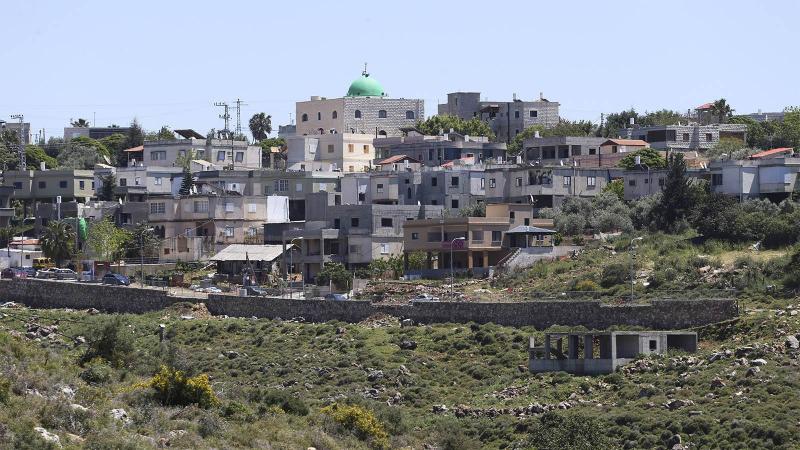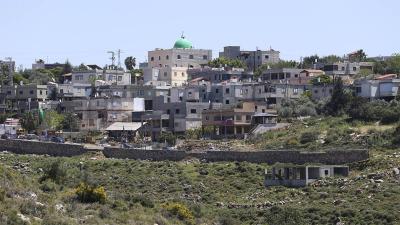Between the Arab al-Aramshe tribe and the residents of the Lebanese town of Dhuhairah lies a story of bread and salt, united by geography and neighborliness until Israel forced the residents of Arab al-Aramshe to move into inland Palestine, turning the village into a military site. This site, known as Tell al-Jurdah, overlooks the Lebanese depth from Al-Ma'sara to Ramesh. Hezbollah's attack using drones has brought the town back into the spotlight, especially due to the high number of casualties among Israeli soldiers. So what do we know about Arab al-Aramshe?
Arab al-Aramshe is a village on the Palestinian-Lebanese border. It is a Bedouin village with origins from Iraq, Lebanon, and Syria. The village did not originally exist; its residents lived in Admeth, Jurdiyah, and Al-Nawajir. Arab al-Aramshe is a courageous town that holds beautiful and entertaining stories, including the tale of the "brave hero" who killed the last tiger of the Bassa, which is now known as "Shlomi." The closest town to Arab al-Aramshe is the Lebanese town of Dhuhairah, separated by the Lebanese-Israeli border, allowing the residents of Arab al-Aramshe to hear the calls to prayer from the mosque in Dhuhairah and vice versa.
Arab al-Aramshe continues to depend on livestock and agriculture, with some of the old houses still standing in Admeth, while those in Jurdiyah and Al-Nawajir have collapsed. However, some ruins remain to remind us of the village's history. There is only one primary school in Arab al-Aramshe, necessitating that intermediate and secondary school children travel to the village of Sheikh Dannon to attend the Comprehensive School of Peace.
The Arab al-Aramshe tribe originally settled in the village of Jurdiyah along the northern border of Palestine and in Dhuhairah, the southernmost town in Lebanon, where Jurdiyah was separated from Dhuhairah by the Sykes-Picot Agreement in 1916. Some of the villages associated with the tribe include: Admeth, Arabin, and Al-Nawajir. The clans of the Arab al-Aramshe tribe include:
1. Al-Tabbashah, with families such as Al-Husseini, Al-Yasin, Al-Muhameed, Al-Ali, and Al-Saad.
2. Al-Hanayn, with families like Al-Kayed.
3. Al-Suwid, with families such as Al-Mithqal.
As for the notable families in Palestine today, they include: Abu Shahin, Al-Maghis, Hammoud, Kayed, Khalifa, Rayiq, Abu Hamad, and Al-Taher. The families of Hanayn and Abu Sari reside in the town of Dhuhairah along the Lebanese-Palestinian border.
### Important Sites in Arab al-Aramshe:
1. **Khirbat Admeth**: Owned by the residents of the Arab al-Aramshe tribe, it is referred to in Hebrew as "Admit," named after the Zionist settlement (Kibbutz Admit) established nearby in 1958. It is located northwest of the Arab al-Aramshe tribe, near the Lebanese-Palestinian border, southeast of the Lebanese village of Al-Ma'sara, and east of Ain Hur. Life in Admeth vanished after its original inhabitants were expelled in the late 1970s and early 1980s, leaving behind ruined stone houses, graves of the deceased, and remnants from ancient times, including the Bronze, Iron, Roman, and Byzantine eras. Near the ruin is a cave named Al-Fakhta (the arch), used as a goat pen, still retains part of its ceiling in an arch shape. Today, Admeth has become a nature reserve, tourist resort, and vast parks, enjoyed by visitors for their stunning views, while its original inhabitants watch longingly from afar, awaiting their inevitable return.
2. **Khirbat Jurdiyah**: Located northwest of the Arab al-Aramshe tribe near the Lebanese-Palestinian border and adjacent to Dhuhairah, separated by barbed wire. Four families from the Hanayn clan still live in the area, refusing to leave despite pressures and temptations: the families of Hamed Abu Samrah, Rayeq Hamdan Al-Maghis, Suleiman Al-Abbas, and Eqab Al-Abbas. It contains remnants from ancient historic periods.
3. **Al-Nawajir**: Situated on the land of the Arab al-Aramshe tribe, west of Jurdiyah, along the northern border of Palestine. Four families from the Hanayn clan live there, who also resisted departure despite all pressures and seductions: the families of Arsan Jassim Al-Maghis, Murab Jassim Al-Maghis, Sadiq Jassim Al-Maghis, and Nazmi Tawhan Al-Maghis. Some of its inhabitants have moved to the wetlands area within Arab al-Aramshe.
### What Happened Today?
In an unprecedented escalation along Israel's northern border, Hezbollah launched a compound operation today, firing no less than four rockets, none of which were intercepted. One of the rockets hit the community center in Arab al-Aramshe in Western Galilee. According to what has been revealed so far, a suicide drone exploded over the building. The Galilee Medical Center in Nahariya reported that it treated 18 people who sustained direct injuries at the community center and from damage inside a vehicle in Arab al-Aramshe. One person was critically injured, two others severely, while four suffered moderate injuries, and eleven had minor injuries. Based on the latest statistics of casualties, the number of injured rose to 20, including 8 dead and 12 wounded, with three in clinical death and four in critical condition due to the counter-attack launched by Hezbollah from Lebanon towards Arab al-Aramshe.




